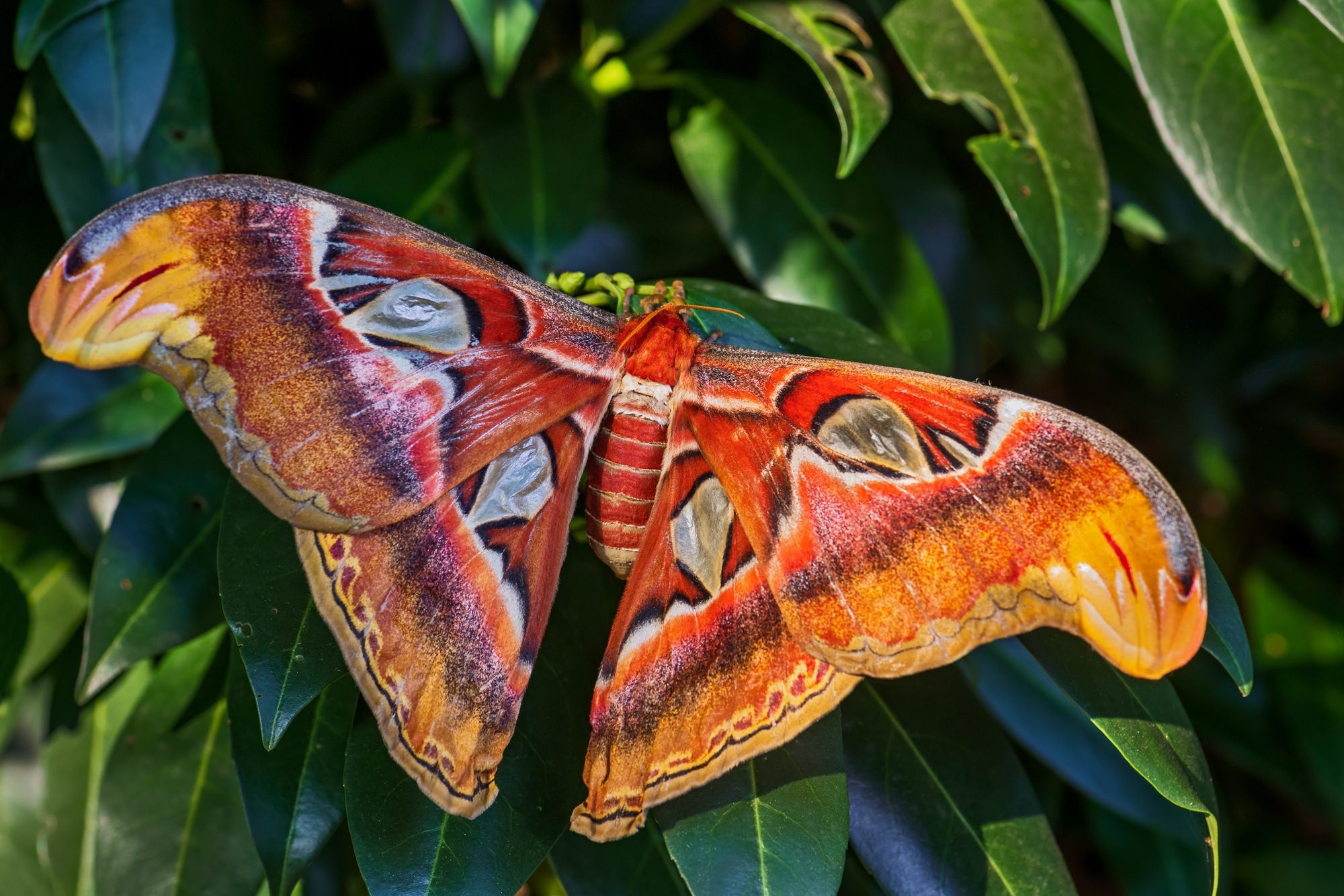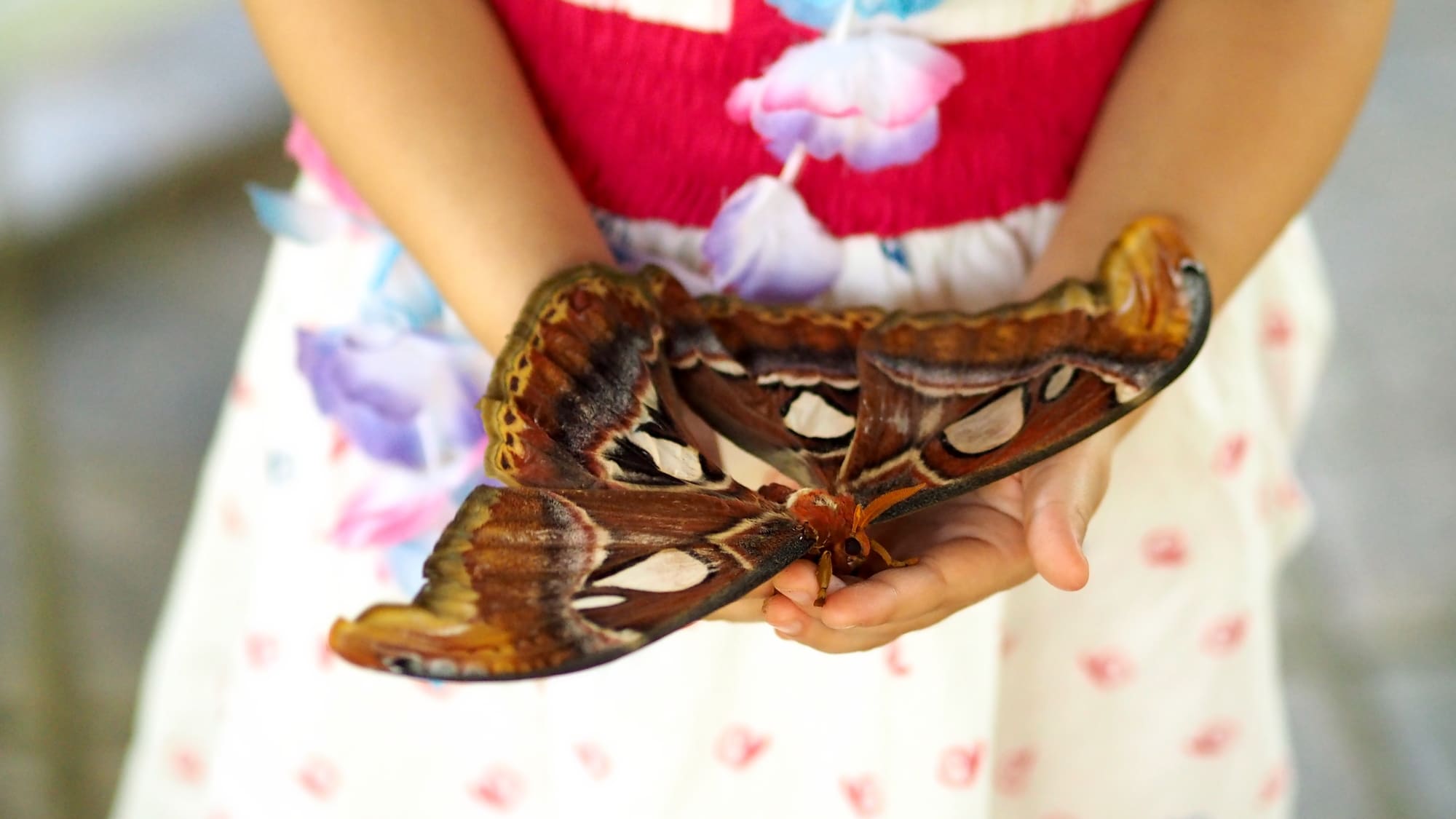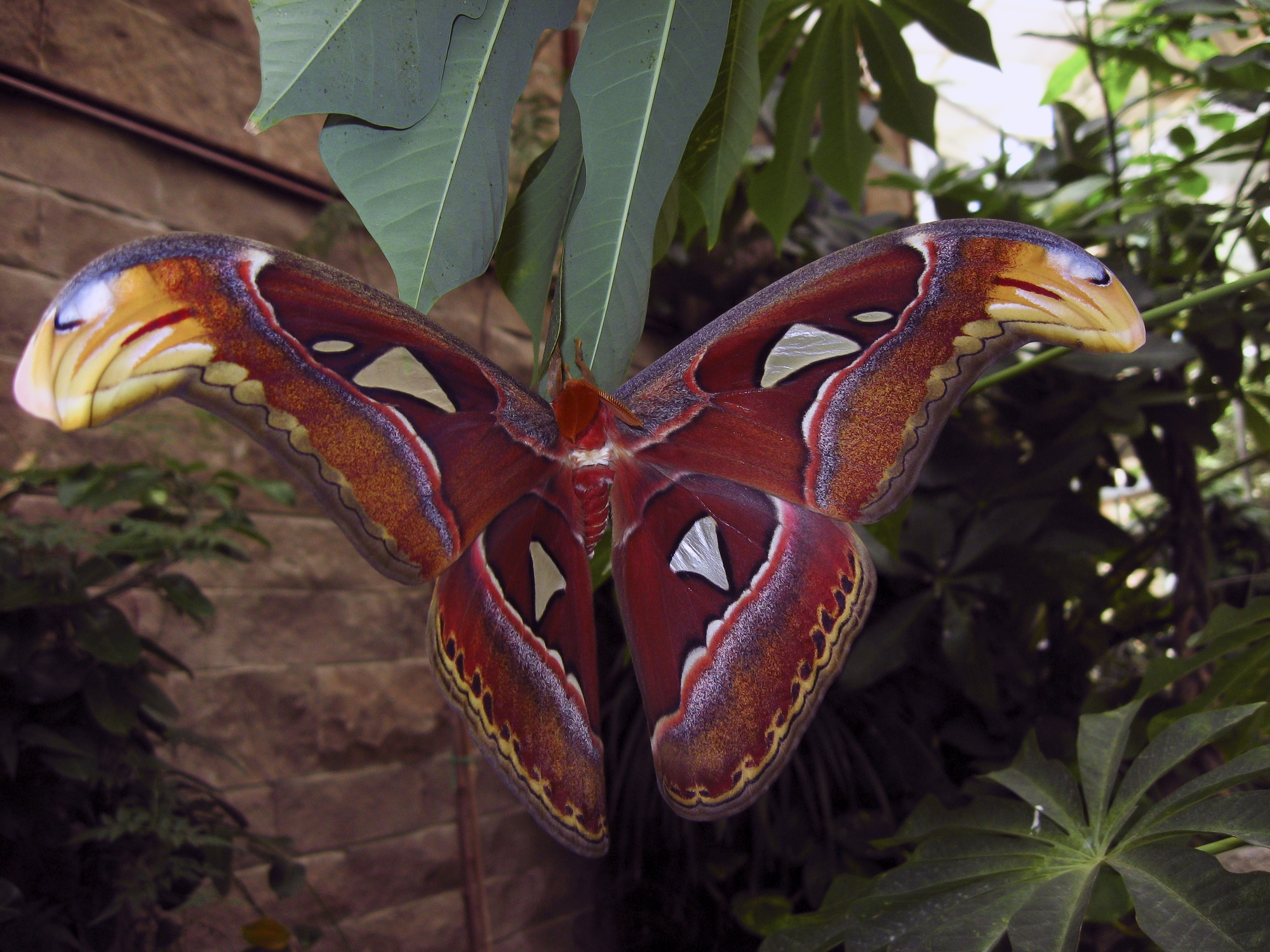The atlas moth (Attacus atlas) is an Asian moth belonging to the family Saturniidae. The name atlas moth is probably derived from Greek mythology, after the titan god Atlas who was forced to hold the sky on his shoulders. The moth’s Cantonese translation means “snake’s head moth” which is most likely because of the markings found on its wings that look like a snake head.
Atlas Moth Identification
The attacus atlas species is sometimes red but is usually orangey-brown, with large curved wings that have intricately designed borders and markings typically black and white.
Due to their markings and colouration, adult atlas moths can sometimes be mistaken for large butterflies; especially in images, they can look similar to the much smaller peacock butterfly. When at rest, atlases hold their long wings tightly against their bodies, making them look like small seagulls with extended necks and long legs. Upon closer look, however, an observer can appreciate a more lepidopteran beauty in atlases’ large eyespots and hairy legs that add texture to these featherweight insects.

Atlas Moth Size
The giant atlas moth is impressive in size, with a wingspan stretching up to 12 inches, it’s among the largest moths (and biggest insects) in the world. It also has the largest wing surface area of all moths.
Both male and female atlas moths have long, narrow wings which stretch beyond their large bodies when at rest, giving them a wingspan at full extension of almost 9-12 inches, which is wider than a human hand. Males have longer antennae as well as tails on their hindwings.
Females are appreciably larger and heavier than males; for an average atlas moth, female body mass is about 30g while male body mass is only about 16g.

Mimicry
At close range, one can see that atlas moth wings are covered in intricate designs resembling eyes or two snake heads. This is an adaptation known as mimicry. Predators like birds and lizards might find atlases unappealing due to their unpalatable taste. However, it is not only the markings on its wings, but also the way the wings move which imitate snake neck movements. Lastly, their size can also be an intimidating warning for predators.
Distribution
Atlas moths are found primarily in the oriental region of the world such as Southeast Asia, including Indonesia, Malaysia, Vietnam, Thailand and Myanmar (Burma). However, these insects are also found in other Asian countries such as Bangladesh, India and Sri Lanka.

Habitat
Atlas moths inhabit tropical and subtropical forests at low elevations. Their habitats are widespread, and atlases can regularly be seen at altitudes up to 500 meters.
Atlas Moth Lifecycle
The life cycle of an atlas moth is between ten and twelve weeks, depending on climate conditions and available resources. Once adult moths emerge, they live only one or two weeks at a push, which is long enough to mate and reproduce.
The moth has a four-stage lifecycle, with complete metamorphosis. The life cycle comprises four stages: egg, larva (caterpillar), pupa (chrysalis) and imago (adult).

Mating
Mating begins when females release a sex-attractant pheromone at dusk. Males are attracted by these chemical messages, which they detect using their large, plumose (feather-like) antennae.
The moths spend all day resting to preserve energy throughout their short lifespan, and so mating occurs at night when the adult female releases a pheromone that the male can detect at great distances.
Egg
Eggs are typically laid at night on the undersides of leaves. The female lays eggs at rates as high as 10 to 15 per hour for up to a total number of 500 or more.
Caterpillar
Atlas moth caterpillars are large, green with yellow bars at each segment of their bodies. They are voracious eaters and have been known to feed on such diverse plants as Hibiscus, Cocos nucifera (Coconut) and Salix. They also eat the leaves of Jamaican cherry trees, cinnamon, and citrus fruit.
The caterpillar will eat almost every second of its life, so it can build plenty of fat storage and enough food for the moth when it is reborn.
Atlas caterpillars typically take between 14 and 16 weeks to develop from an egg into a pupa after undergoing metamorph.
Pupa
The pupae are brown with small darker spots and bands. They are found attached to branches or leaves, generally at the height of around 1 metre off the ground.
The larva metamorphoses into an adult by spinning a brown silk cocoon and secreting a protective fluid from its mouthparts. Shortly after using up its fat reserves, the moth emerges as an adult.
In some Asian countries such as Taiwan, the durable abandoned cocoons left by the adult can be used as small pocket change purses. This can be done simply by installing a zipper.
Imago (Adult)
Adult atlas moths have no mouth and so don’t eat, which is why the caterpillar will eat as much as possible during the larval stage for the insect to survive its short life.
Sources and References
- 5 Awesome Facts About the Atlas Moth – mentalfloss.com
- Atlas Moth – khaosok.com
Sam loves to learn about animals and their habitats. He has been a nature lover from a very young age, and has been writing papers and articles about wildlife for as long as he can remember.
